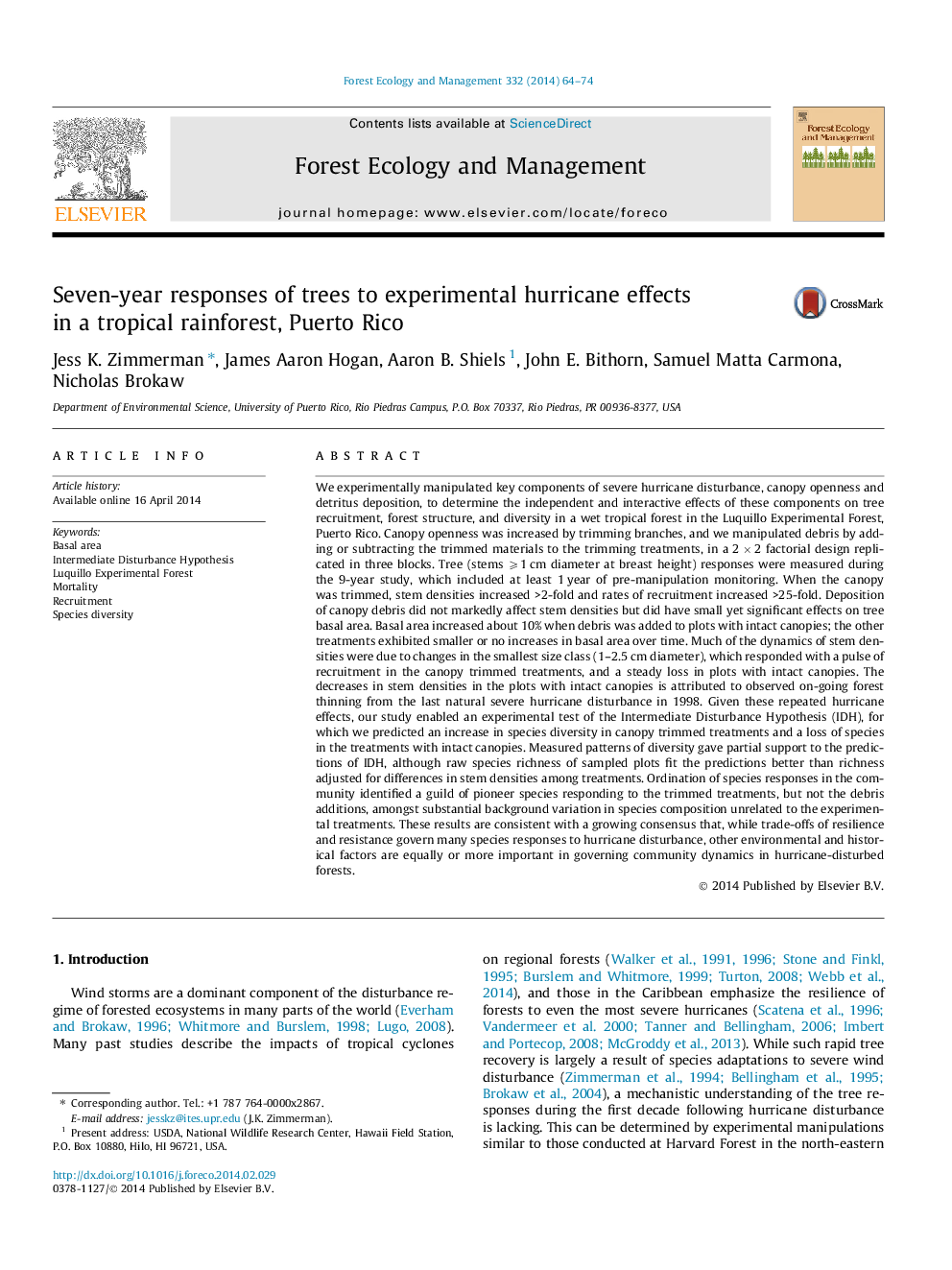| کد مقاله | کد نشریه | سال انتشار | مقاله انگلیسی | نسخه تمام متن |
|---|---|---|---|---|
| 86490 | 159193 | 2014 | 11 صفحه PDF | دانلود رایگان |
• Tree community responses were measured in a 7 yr hurricane experiment.
• Canopy opening increased the 1–2.5 cm DBH tree recruitment and later mortality.
• Deposition of canopy debris only had small positive impacts on basal area increment.
• The experiment found weak support for the Intermediate Disturbance Hypothesis.
• Successional responses were also weak but evident in an ordination.
We experimentally manipulated key components of severe hurricane disturbance, canopy openness and detritus deposition, to determine the independent and interactive effects of these components on tree recruitment, forest structure, and diversity in a wet tropical forest in the Luquillo Experimental Forest, Puerto Rico. Canopy openness was increased by trimming branches, and we manipulated debris by adding or subtracting the trimmed materials to the trimming treatments, in a 2 × 2 factorial design replicated in three blocks. Tree (stems ⩾1 cm diameter at breast height) responses were measured during the 9-year study, which included at least 1 year of pre-manipulation monitoring. When the canopy was trimmed, stem densities increased >2-fold and rates of recruitment increased >25-fold. Deposition of canopy debris did not markedly affect stem densities but did have small yet significant effects on tree basal area. Basal area increased about 10% when debris was added to plots with intact canopies; the other treatments exhibited smaller or no increases in basal area over time. Much of the dynamics of stem densities were due to changes in the smallest size class (1–2.5 cm diameter), which responded with a pulse of recruitment in the canopy trimmed treatments, and a steady loss in plots with intact canopies. The decreases in stem densities in the plots with intact canopies is attributed to observed on-going forest thinning from the last natural severe hurricane disturbance in 1998. Given these repeated hurricane effects, our study enabled an experimental test of the Intermediate Disturbance Hypothesis (IDH), for which we predicted an increase in species diversity in canopy trimmed treatments and a loss of species in the treatments with intact canopies. Measured patterns of diversity gave partial support to the predictions of IDH, although raw species richness of sampled plots fit the predictions better than richness adjusted for differences in stem densities among treatments. Ordination of species responses in the community identified a guild of pioneer species responding to the trimmed treatments, but not the debris additions, amongst substantial background variation in species composition unrelated to the experimental treatments. These results are consistent with a growing consensus that, while trade-offs of resilience and resistance govern many species responses to hurricane disturbance, other environmental and historical factors are equally or more important in governing community dynamics in hurricane-disturbed forests.
Journal: Forest Ecology and Management - Volume 332, 15 November 2014, Pages 64–74
